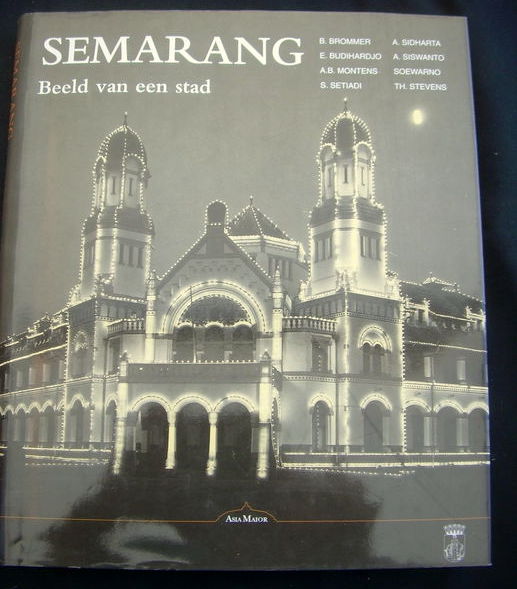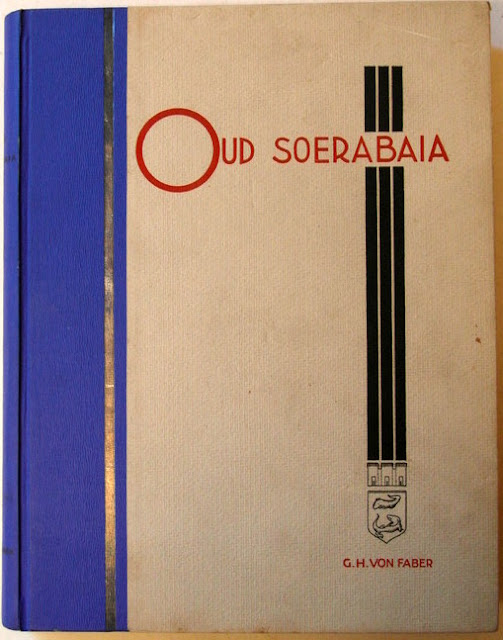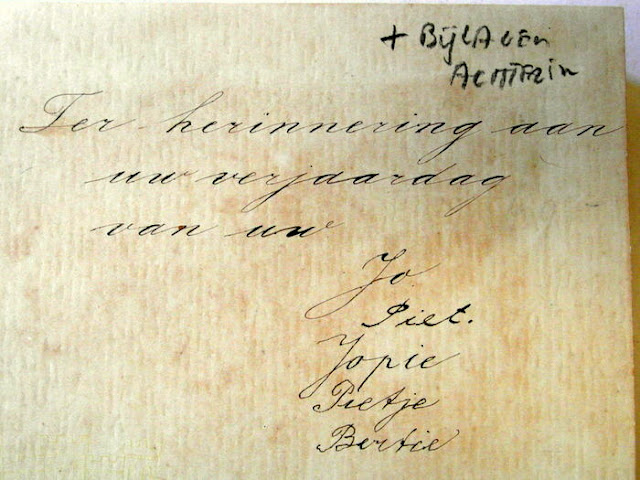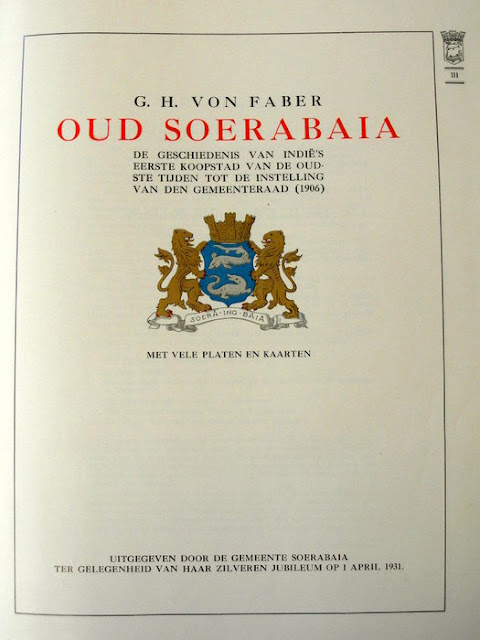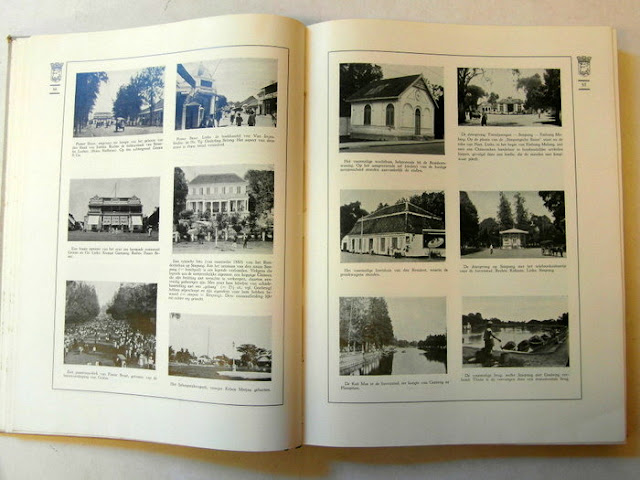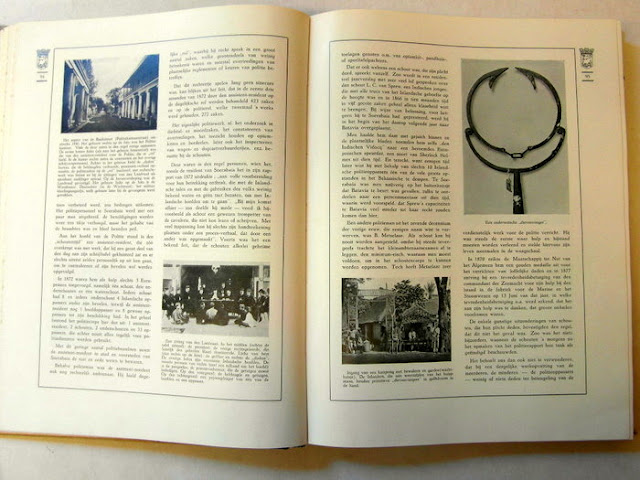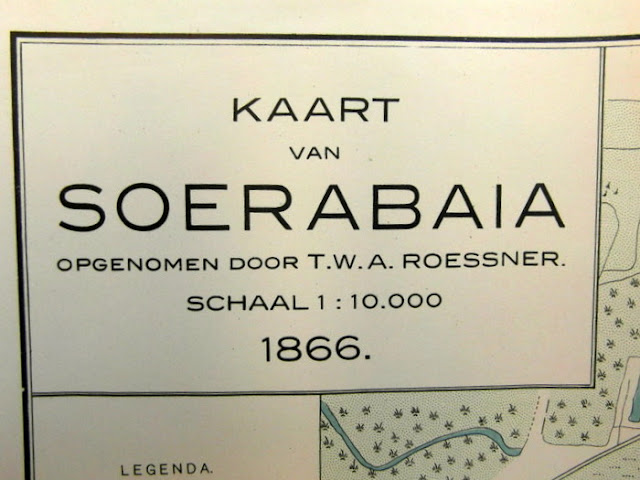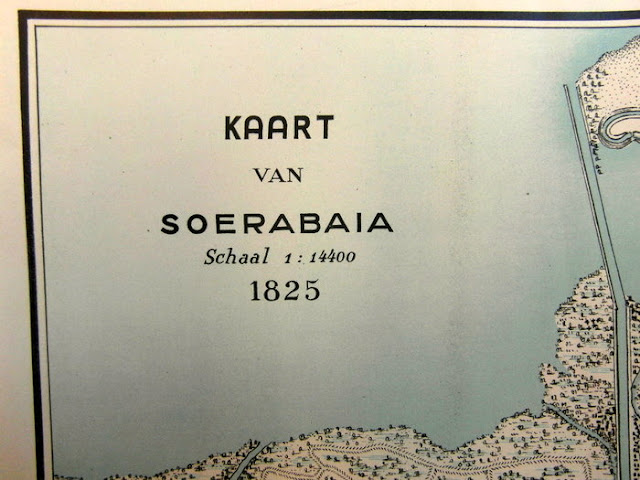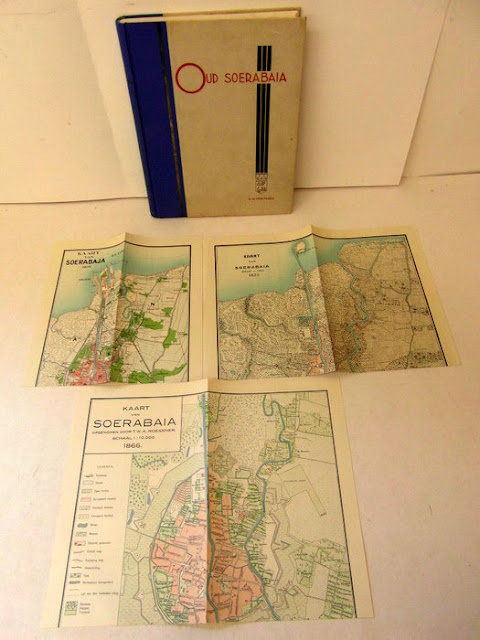Artists' Books in the Modern Era 1870-2000: The Reva and David Logan Collection of Illustrated Books
Published by -Fine Arts Museum of San Francisco 28 Feb -, 2002
![]()
Exhibition/Collection catalogue. Second printing with revisions. 285x245mm 303 pages. Illustrated in 450 colour plates. Cloth. Fine in dustjacket. At the beginning of the 20th century, artists' books abandoned extravagant and costly editions in favour of aesthetic and technological experimentation produced through inexpensive photomechanical means. Designed for distribution to a wide audience and printed in large editions, these volumes were often bold, colourful and accessible. The Logan Collection, the best of which is presented here, surveys late nineteenth and twentieth-century developments in the genre of artists' books. Notable for its masterpieces and the superb quality of its more than four hundred artists' books, it provides the most comprehensive historical overview of the genre available today. Some of the most prestigious publishers of the 20th century - among them Ambroise Vollard, Albert Skira, Gerald Cramer and Iliazd - have engaged the imagination of the finest artists - among them. Picasso, Malevich, Kandinsky, Kokoschka and Matisse - to collaborate on the creation of the vibrant publications celebrated in this volume. We are specialists in Catalogues: Exhibitions, Auctions, Collections, etc., with a picture of the cover available on request.
The Avant-Garde Artist’s BookMarjorie Perloff
What is an artists’s book? Most scholars today would agree that it is a genre that fuses word and image, and that its verbal and visual components, whether the product of collaboration or the work of a single artist, must have a significant relationship to one another. Then, too, unlike the traditional illustrated book, the artists’s book is always self-conscious about the structure and meaning of the book as an art form. It is the book as self-contained object that is the work of art, not the individual illustration or text on a given page. In Kasimir Malevich’s cover [figure 1] for Velimir Khlebnikov and Alexei Kruschenykh’s Troe (The Three, 1913), for example, triangles, circles, and cylinders relate the hooded robotic figure at the center to the lettering of the title and the giant comma beneath the platform on which the man stands. Letter and image are inextricable.
The beautiful books in the current exhibition of David Henry Kahnweiler’s artists, drawn from the Reva and David Logan Collection here at the Legion of Honor Museum, prefigure what was to become a major twentieth and twenty-first century genre. I say “prefigure,” because the first few books I shall be speaking about here today are more properly livres d’artiste than they are artists’s books. The livre d’artiste came into being as a publishing enterprise initiated, not by the artists or poets themselves but by their editors—that is to say, by such figures as the Parisian art dealer Ambroise Vollard (in the mid-1890s) and Kahnweiler more than a decade later. Livres d’artiste, the critic Johanna Drucker notes, were usually deluxe editions, often with large-sized format, elaborate production values such as hand-coloring, virtuoso printing, fine binding, and the use of rare materials. “The livre d’artiste took advantage of the expanded market for visual art which had grown in the nineteenth century . . . and an educated upper middle class with an appetite for fine consumer goods.” [1] From the artists’ perspective, it meant the possibility to produce work that they normally wouldn’t or couldn’t produce on their own. It was an excellent way to publicize their paintings. Indeed, the early publishers of livres d’artiste often chose classics—Shakespeare, Dante, La Fontaine, Aesop– thereby insuring a readership for the books in question.
It was the genius of Henry-David Kahnweiler [figure 2] to bring together his artists with the poets of their own time, indeed of their own circle. But then Kahnweiler was no ordinary art dealer. Born in 1884 in Mannheim, the son of an affluent stockbroker, Kahnweiler first came to Paris in 1902 to learn the family business and began to collect prints by Manet, Toulouse-Lautrec, Cezanne, and Vuillard. Sent to South Africa to work for an uncle, a financier with investments in gold and diamond mines, Kahnweiler pined for the Paris art world and in 1907, at the age of twenty-three, he returned to open his first gallery at 28 rue Vignon. At the Salon des Independants, where he purchased some paintings by Fauve artists like Derain and Vlaminck, he met both Braque and Picasso. In his marvelous memoir, My Galleries and Painters, Kahnweiler recalls his first visit to Picasso’s studio at the Bateau Lavoir (laundry boat, so-called because of its resemblance to the laundry boats of poor women along the river) at 13 rue Ravignan [figure 3]. Picasso was then at the lowest moment of his fortunes, living in extreme poverty and squalor. On the easel in the middle of the cluttered studio, was Les Demoiselles d’Avignon [figure 4], derided by most of Picasso’s friends as too ugly, too bizarre. Kahnweiler found it fascinating and began to buy Picasso’s sketches for it. Thus began a friendship that was to change the course of art.
Kahnweiler was also interested in poetry. His gallery soon sponsored a series called Editions Kahnweiler, based on the ingenious principle that the avant-garde poets and painters of the moment might be brought together in deluxe editions. The first of Kahnweiler’s livres d’artiste was Apollinaire’s L’Enchanteur Pourrissant (The Rotting Enchanter) of 1909, with thirty-two woodcuts by André Derain [figures 5-6]. Apollinaire’s enchanter is the Merlin of Arthurian legend: in the poet’s fanciful tale, the enchanter’s grave is visited by a number of figures from mythology, folklore, and history, figures who have been interpreted as Merlin’s alter egos, recounting their erotic adventures. A charming but somewhat slight book of lyrical prose, L’Enchanteur was perfectly in sync with Fauve concepts of stylized, expressivist art, and the young Apollinaire was delighted with Derain’s large, bold, and intentionally rough-cut black and white woodblocks. “The most exacting reformer of aesthetics,” he wrote, Derain has engraved on wood the images, initial letters and ornaments which make of this book a pure artistic marvel.”
One of the inhabitants of the Bateau Lavoir, and a great friend of Picasso’s in the pre-war period was the poet Max Jacob. Later referred to as a “Cubist” poet, because of the shifting perspectives, contradictory verbal clauses, and semantic indeterminacy of his lyric, Jacob was a radical poet, much more difficult than the genial, pre-Modernist Apollinaire of L’Enchanteur Pourrissant. Accordingly, when Kahnweiler asked Derain to illustrate Jacob’s autobiographical novel Saint Matorel, Derain declined. “It is impossible,” he wrote Kahnweiler in 1910, “for me to do anything for the manuscript. It’s a wonderful work which leaves no room for me, and besides, much as I may admire it, my preoccupations which form the subject of my work are completely absent from this book.” [2] Derain was evidently disoriented by a text like Jacob’s that blended anecdotal narrative, more or less autobiographical, with passages of Christian mysticism (Jacob, who was Jewish converted to Catholicism and later spent years in a convent). Then, too, Jacob’s narrative juxtaposed different temporal and spatial planes in ways not familiar to the Fauves, who retained the basic premises of pictorial realism, however stylized.
Kahnweiler, not to be deterred, next enlisted Picasso and, to his surprise, the latter accepted. On April 28, 1910, Jacob wrote to Kahnweiler that he had learned with pleasure that Picasso had consented to illustrate Saint Matorel (Seckel 78). But the project was not realized immediately because Jacob, always penniless and evidently near starvation, sold some of Picasso’s designs, much to the painter’s indignation. By July, however, Picasso, writing from Cadaqués, the Costa Brava spot where he painted in the summer, told Kahnweiler that he was ready to begin the plates. The publishers’ prospectus, written by Jacob and distributed at the beginning of 1910, reproduces Picasso’s etching Mlle Léonie on a chaise lounge [figure 7], with the comment, “Max Jacob has chosen his hero from the poor quarters of Paris. . . he has created a kind of Hamlet who will die in a monastery, struck by divine grace, having converted one of his old companions” (79). And Jacob goes on to praise the “rigorous composition, at once simple and complex” of Picasso. “The engraving,” he writes, “seems to us appropriate for this work which, however strange and mystical, is also quite modern.”
Here we have Jacob the self-publicist. For the fact is that, friendship aside, Picasso and Jacob had little comprehension for each other’s work. In a letter to Kahnweiler, Jacob wrote, “When you receive Picasso’s etchings, I will look at them with great pleasure. The etchings themselves don’t interest me; I’m not an art connoisseur; I am merely curious to know what the Homunculus inspired Faust to do; the Homunculus, that’s Matorel” (p. 79). Picasso, for his part, was mainly interested in issues of typography. “I’ve just received your prospectus for Saint Matorel and we must talk about this subject,” he wrote Kahnweiler. “There is too much margin and the letters are too small. Tell me exactly the size of the paper.”
So it goes throughout the summer and fall of 1910. In the end the first Cubist livre du peintre is an elegantly but conventionally printed book, graced by four plates by Picasso, none of which have much substantive to do with Jacob’s narrative. Let me explain.
Picasso’s engravings for Saint Matorel belong to the period of Analytic Cubism at its most rigorous. Take, for example, the Portrait of D. H. Kahnweiler, painted in Paris soon after Picasso’s return from Cadaqués in the early autumn of 1910. Although Picasso worked from a photograph [see figures 8-9] the painting evidently demanded twenty sittings. And the results are telling. At one level, the “portrait” is nearly abstract: the distinction between solid forms and the space around them breaks down. Instead of point perspective, we have here an unstable structure of dismembered planes in indeterminate spatial positions. Thus the rectangular plane in the bottom right may be in front of or behind the whitish plane above it. Again, objects seen in outline like the wine glass at center left, dissolve into the opaque textured planes. Light and shadow create a fantastic geometry of surfaces, geometry that implies relationships in an illusory depth at the same time that it insists on the flatness of the surface. The human figure is decomposed in what becomes a linear grid of ochres, umbres, and grays.
At the same time, Picasso complicates the visual field by providing certain spatial clues about the painting’s sitter. A still life can be made out on the left, which anticipates the theme of the Bottle on the Table of 1912, a Caledonian carving present in Picasso’s studio on the right. Again, Kahnweiler’s eyes, nose, mouth, hair, gloved hands, and a coat-button can all be identified, serving the same informative function. Cubism is characterized by this oscillation between compositional game—the flat volatile grid—and representational reference, as in the trompe l’oeil nail that Braque introduced in his Cubist paintings—a perfectly real nail attached to the surface of the canvas.
How does this dialectic work in the four etchings for Saint Matorel? Picasso, Kahnweiler declared, “had taken the great step forward. He had shattered closed form.” [3] Mlle Léonie, named for Matorel’s true love in Jacob’s novel, is depicted in the first plate [figure 10] as an abstractly rendered but recognizably female form, with a round head of hair, long neck, V-neck dress, bare right arm, geometically shaped breasts, and softly curved body, with bent knee. But the right side of the body is covered with hatched lines and the discontinuity of contours resembles the grid form of the Kahnweiler portrait. The next plate [figure 11] takes Cubist composition a step further. Mlle Léonie dans une chaise longue is a complex and sophisticated etching, made of elaborate planes and curves, the face both frontal and in profile, echoed by face-like shapes in the lower part of the etching. La Table [figure 12] is yet more abstract, the glass, key in the lock, and table drawer absorbed into the volumetrics of the cubist composition. And Le Couvent [figure 13], evidently named for the Convent of Santa Teresa of Avila at Barcelona where Matorel, having become Brother Manasse, dies a saintly death, is the most abstract of the four. One can make out a door, a building, possible roofs and arches, but nothing in the plate makes clear that the building or buildings in question have anything to do with a convent. A composition of light and shade with open contours, Le Couvent has more in common with, say, the graphics of Malevich than the text of Max Jacob.
The poet’s prose, it has been suggested, is laced with puns and double entendres: in the opening chapter of Matorel, for example, the narrator, listening to his friend, the poor little subway employee Matorel, recalls the latter’s words, “Il y a des toiles d’araignéé dans l’absolu” (“There are spider webs also in the sky”), with its pun on des toiles/ étoiles (webs of cloth / stars), and its gradual creation of the image of the spider web as ladder to the Absolute. But such puns are closer to Surrealist discourse than to the Cubist Picasso, and, in any case, the text of Matorel itself is perfectly linear, the typography and page layout normal, with justified margins. In a livre de peintre like this one, the images are neither illustrative—they tell us nothing about Jacob’s narrative itself—nor are they formally integrated. Rather, the affinity is one of period style—the move toward non-representation.
The same pattern holds for the second Jacob-Picasso collaboration on the drama, The Siege of Jerusalem [1914; see figure 14]. Again, the initiative is Kahnweiler’s rather than that of painter or poet. On June 1913, Picasso wrote Kahnweiler, “I have thought about the engravings for Max’s book and I think we agree to put seven small engravings in the book—on separate pages” (102); the payment was to be 860 to 1290 francs per plate. The subscription was announced in December as the third volume of the trilogy Saint Matorel. According to the prospectus, “no one today is more worthy of the luxury form of our editions than the author of this beautiful trilogy which begins with Saint Matorel and ends with the siege of Jerusalem, and whose conception takes us from heaven to earth with the audacity of the true masters” (104). “Picasso,” says Jacob gushingly, “is known around the world. Everything he touches is beautiful. Our subscribers will be delighted with this magnificent collaboration” (105).
Picasso himself spoke less enthusiastically about the project, remarking on the difficulty of illustrating Jacob’s dramatic poem, with its heady mix of medieval mysticism, astrology, Shakespearean theatre, and Goethe’s Faust. The very idea of “illustration” or even tonal conjunction was impossible and so Picasso simply went his own way, producing three engravings (one for each act of the play) that reflect his own interests—most notably Femme nue à la guitare [figure 15], a beautiful composition with intricate cross-hatching and overlapping planes, recalling the many paintings of the same subject in this period, the rounded shoulders and breast forms echoing the guitar shapes, and placed in tension with such representational traces as the woman’s eyes near the top of the frame. The other two — Nature morte avec crane [Figure 16], and Femme [Figure 17] are intricately drawn Cubist compositions, as brilliant in their own right as they are unrelated to Jacob’s prose. Indeed the text opposite Nude Woman with a Guitar [figure 14] contains the following speech by Cambyses, the great Persian king:
The doors of the city are pearls, the walls are onyx and sapphire, the squares are gold. With the speed of light, genies bring your greetings around the world before they have been uttered. And if one doesn’t budge one hears in this city exquisite music. It is the dwelling place of peace and delight; we will make it the capital of love. [4]
This Utopian vision is diametrically opposed to the everyday quality of Picasso’s images of everyday life—a woman with a guitar, a still-life, a table and chairs.
A very different paradigm may be found in two remarkable books in the Logan Collection by the French avant-garde poet Blaise Cendrars. The first is the La Prose du Transsibérien et de la petite Jehanne de France (1913), as illustrated by Sonia Delaunay, the second, Cendrars’ film script (never to be realized), La Fin du monde filmée par l’ange N.D. (1919), with twenty-two pochoirs by Fernand Leger. [5] Neither is, strictly speaking, a collaboration of the sort we find in the Russian avant-garde since Cendrars had already written his text when the visual artist began to work on it. Still, both are full-fledged artist’s books in their coordination of verbal and visual materials.
La Prose du Transsibérien et de la petite Jehanne de France [Figure 18] was published in Paris in the autumn of 1913 by Les Hommes nouveaux, a radical journal and small press founded by Cendrars and his friend Emile Szytta.[6] It bore the subtitle: “poems, simultaneous colors, in an edition attaining the height of the Eiffel Tower: 150 copies numbered and signed.” Le premier livre simultané, as the work was also called, was made up of a single sheet of paper, divided down the center, which unfolded like an accordion, through twenty-two panels to a length of almost seven feet [see figures 19-20 and model]. The height of the Eiffel Tower was to be attained by lining up the 150 copies of the text vertically.
On the left [figure 21], a panel containing the title page initiates the passage of the eye downward, through a sequence of visual semi-abstract forms in bright primary colors, to a final panel [figure 22] that contains a child’s image of the Eiffel Tower, a curiously innocent giant red phallus penetrating an orange Great Wheel with a green center. On the right [figures 19, 21] meanwhile, the text of the poem is prefaced by a Michelin railway map of the Trans-Siberian journey from Moscow to the Sea of Japan; underneath this map, a wide strip of green introduces the poem’s title in big block letters, as if the pochoir were a poster signboard. The text then follows, arranged in succeeding blocks made up of different typefaces and broken by large irregularly shaped planes—some rectangular, some oblong or map-shaped– of predominantly pastel shades of pink, green, yellow, and blue. The coda, “Paris / Ville de la Tour unique du grand Gibet et de la Roue (“Paris / City of the incomparable Tower of the Rack and the Wheel”), corresponds to the visual image of tower and wheel on the bottom left [figures 20, 22].
Neither Blaise Cendrars nor Sonia Delaunay, whose work, like her husband Robert’s, was called Simultaneist, because of its reliance on Chevreuil’s theory of complimentary colors, were part of the Cubist cenacle which centered around Kahnweiler. The link between the two groups was the art criticism of Apollinaire. In a newspaper article of June 1914, for example, Apollinaire declared:
Blaise Cendrars and Mme Delaunay-Terk have carried out a unique experiment in simultaneity, written in contrasting colors in order to train the eye to read with one glance the whole of a poem, even as an orchestra conductor reads with one glance the notes placed up and down on the bar, even as one reads with a single glance the plastic elements printed on a poster.
The poem-painting as a kind of advertising poster—in a short piece called “Advertising = Poetry” (1927), Cendrars wrote, “Advertising is the warmest sign of the vigor of today’s men—indeed, one of the seven wonders of the world.” “Imagine,” he added, “the sadness and monotony of meals and wine without polychrome menus and fancy labels.” And in Herwath Walden’s avant-garde Berlin periodical Der Sturm (September 1913), Cendrars published an intriguing manifesto that relates to his concept of the artist’s book:
Literature is a part of life. It is not something “special.” I do not write
by vocation. Living is not a vocation. . . . I have written my most beautiful poems in the great cities, among five million men. . . .
I love legends, dialects, grammatical errors, detective novels, the flesh of whores, the sun, the Eiffel Tower, Apaches, good negroes and that trickster of a European who makes fun of modernity. Where am I going? I have no idea, since I even visit museums. . . .
Here is what I wanted to say. I have a fever. And this is why. I
love the painting of the Delaunays, full of sun, of heat, of violence. Mme. Delaunay has made such a beautiful book of colors that my poem is more saturated with light than is my life. That’s what makes me happy. Besides, think that this book should be two meters high!
Moreover, that the edition should reach the height of the Eiffel Tower!
And in one of his so-called “elastic poems,” “Contraste,” he declares, “The windows of my poetry are wide open to the boulevards.”
Curiously enough, this was literally the case. During the fall of 1913, the Cendrars-Delaunay Transsibérien, was exhibited in Paris, Berlin, London, New York, Moscow, and St. Petersburg. It became not only a poem but an event, a happening. At the Montjoie! Exposition in Paris on February 24, 1914, Mme. Lucy Wilhelm stood on a chair so as to recite the gigantic poem, which was hung on the wall. Beginning at ceiling level, she gradually bent her knees and finally sat down on the chair to read the conclusion. Performance art, we would call it. But what is not always remarked upon in discussions of the Cendrars-Delaunay simultaneous book is that poem and painting exhibit a very different tonality. The pochoir is predominantly abstract, with rainbow-colored balloons, discs, spirals, and fuzzy triangles cascading downward to the little red tower and wheel. The colors, both on the left and on the right, where they frame the text, express the joie de vivre of fluid motion. But even as both Delaunay’s images and Cendrars’s poem celebrate energy, the poem’s tone and mood are strikingly different from its visual representation.
La Prose du Transsibérien is a text full of contradictions. The title, for starters, is odd: it should be “le prose” and, even then, why call a lineated lyric “prose”? Cendrars declared that he used the word prose so as to open up the discourse; then, too, the poem is “dedicated t the musicians”—evidently those new musicians of the period, Satie or Stravinsky who were avoiding all conventional rhythms. The long free verse lines, with their paratactic structure and repetition, remind one of Whitman, but the voice of this poem is hardly Whitman’s oracular one. Rather, Cendrars stresses immediacy, nervous energy, excitement [figure 23]:
Back then I was still young
I was barely sixteen but my childhood memories were gone
I was 48,000 miles away from where I was born
I was in Moscow, city of a thousand bell towers and seven train stations
And the thousand and three towers and seven stations weren’t enough
For me
Because I was such a hot and crazy teenager
That my heart was burning like the Temple of Ephesus or like
Red Square in Moscow
At sunset
And my eyes were shining down those old roads
And I was already such a bad poet
That I didn’t know how to take it all the way. [7]
(Ron Padgett, Trans.)
“Back then”—“En ce temps-là”—when was that exactly? And what does it mean not to be able to go all the way (“jusqu’au bout”)? Cendrars’s metaphors are extravagant: his heart burns like the Temple of Ephesus or like Red Square in Moscow; in the next section, “the Kremlin is like an immense Tartar cake / Iced with gold,” and so on. The poem’s journey is posied on the threshold between documentary realism and fantasy. Time and space are carefully specified: the poet boards the Trans-Siberian in Moscow on a Friday morning in December; he is accompanying the jewel merchant going to Harbin in the heart of Manchuria. The train itself is a microcosm of international technology—“hatboxe, stovepipes, and an assortment of Sheffield corkscrews” (see figure 25, bottom).
But it is also carrying “coffins from Malmo filled with canned goods and sardines in oil,” and as the poem unfolds, images of violence become more and more obtrusive. At first (figure 25), the references are sexual- “I wanted to drink them [the women] down and break them”—but quickly the vision turns to “all those houses and all those lives / And all those carriage wheels raising swirls from the broken pavement,” which, says the poet, “I would have liked to have rammed into the roaring furnace / And I would have liked to have ground up their bones.”
Bombast, hyperbole, violence, as Blaise travels westward towards Manchuria, in the company of his amie, the little prostitute Jeanne, named for Joan of Arc, who keeps asking him when they can go back to Paris, the mood darkens. At first, war (the reference is to the Russian-Japanese war of 1905) is still far away. “In Siberia the artillery rumbled –it was war / Hunger cold plague, cholera” (figure 25). But before long “the telegraph lines” are seen dangling down from “the grimacing poles that reach out to strangle them” and “Wild locomotives fly through rips in the sky.” Blaise tries to entertain Jeanne (or himself) with fanciful exotic tales about lovers in the Fiji Islands or beautiful hanging gardens in Borneo, but he can’t avoid the sense that “We disappear into a tunnel of war.” And a note of fear comes in [figure 26:
I saw
I saw the silent trains the black trains returning from the Far East and
Going by like phantoms. . .
I went to the hospitals in Krasnoyarsk
And at Khilok we met a long convoy of soldiers gone insane
I saw a quarantine gaping sores and wounds with blood gushing out
And the amputated limbs danced around or flew up in the raw air
These lines are astonishing in the premonition of what was to come.
Written in 1913, before Cendrars knew that war would break out within a year and that in that war he would lose his right arm in battle, Cendrars anticipates the debacle. Indeed, in Au Coeur du Monde (1917), written not long after Cendrars lost his arm, read, “Ma main coupée brille au ciel dans la constellation d’Orion”; “my broken hand shines in the sky in the constellation Orion.” That image is anticipated in the Transsibérien by images of gaping sores, blood gushing, and trains disappearing. In the dream vision that follows, Jeanne has disappeared, and the poet, alone, is playing the piano.
Finally the dream dissolves. Blaise steps off the train just as the offices of the Red Cross are set on fire. And now, without a break, we are suddenly back in an everyday Paris [figures 27-28]. In this “simultaneous” poem, narrative is replaced by descriptive noun phrases in apposition and hyperbole: “O Paris / Main station where desires arrive at the crossroads of restlessness,” and the poet wishes he had never left home. Now friends surround him like “guard rails,” women like “lighthouses.” In the end, there is nothing to do but to go to the Lapin Agile and have a drink. And the poem ends with an apostrophe to “Paris / City of the incomparable Tower the great Gibbet and the Wheel.” The gibbet is, of course, the guillotine, and in this context both the Eiffel Tower and the Ferris Wheel for the Paris Exposition of 1900 seem sinister. The montage of sensations, images, and narrative fragments, the time-shifts from past to present and back again: all these make Cendrars’s poem a prescient elegiac homage to the Paris of the avant-guerre.
What does all this have to do with Delaunay’s imagery [figure 27]? Toward the bottom of the panel, we see black and brownish cloud shapes that look somewhat ominous: a storm, perhaps, is heading for the tower. But the little red phallic tower, inside the orange-green wheel remains childlike and witty: one wonders why Delaunay’s lovely rendering of the poem is so serene, so pretty. In the end, this “artist’s book” is thus a study in contrasts. Just as the pochoir juxtaposes primary colors, so image and word present a contrast between the joie de vivre of the poem’s opening and its odd mix of buffoonery, high spirits, and a deep-seated anxiety.
A more symbiotic relationship between poet and painter occurs in the production of one of the most beautiful artist’s books in the Logan Collection—one of its pages graces the catalogue of the Logan Collection– La fin du monde filmée par l’ange N.-D., published by Jean Cocteau’s Editions de la Sirène in 1919 [figures 29-31] . The book’s designer was the great late Cubist painter of machine forms Fernard Léger, who had been a friend of Cendrars since 1910 and had already illustrated Cendrars’s 1917 short prose piece J’ai tué (I have killed]—a painfully honest account of the moments in a French soldier’s life before he commits the act he has been trained to do—to kill a German. In J’ai tué, as in Delaunay’s Transsibérien, the images are perhaps too attractive, too placid for the content. In La fin du monde, however, Léger rose to the occasion and created a perfect counterpart for Cendrars’s narrative.
Cendrars’s sceenplay, never to be filmed, was written, so the poet claimed, during a single “beautiful night.” [8] Divided into seven short chapters, themselves divided into paragraphs consecutively numbered from beginning to end, it tells the story of God, in the guise of an American Wall Street tycoon, who is first seen at his desk, “feverishly” pushing papers and chewing at his cigar, then calling a meeting of his “departmental supervisors,” who include “The Pope, the Grand Rabbi . . . the Dalai Lama, the great Bonze. . . Rasputin,” and so on. The Creation Myth (here occupying less than six days) takes the form of a voyage, not wholly unlike that of the Transsiberian train, the Notre-Dame Angel, in the form of a camera, tracking God’s journey through exotic lands, including the country of the Martians, followed by the fin du monde—the destruction of the world by means of fire and flood, culminating in the declaration that “The waters become mountains and the continents rot. Whirlwind” (Chefdor 53). But in the last chapter, the cycle comes full circle: plant and animal life are reborn and once again, God, that busy Executive, is seated at his desk at GriGri’s Communion Trust Company.
The text of Fin du Monde is hardly in the league of The Prose of the Trans-Siberian. But as an artist’s book, it is much more successful. Leger designed the typography, composed of a robust Morland face 24, which gives the book a black, mechanical appearance, with individually composed stenciled letters and various font faces in the decorations; the bright and colorfulletters mimic the neon lights at night. And there is subtle word and lettriste play. Consider, to begin with, the cover where the giant N belongs to the words “fin,” “monde,” “l’ange,” “roman,” “N. D.” for Notre Dame, and “Cendrars,” and the E of “Sirene” connects “Editions” to the “Rue la Boétie,” where the publisher is located. The last letter of “FiN” is the first of “Notre Dame, and the composition of the stenciled block letters, beautifully arranged so as to create verbal mysteries, is enhanced by the silhouette of letter against the figure of the winged angel. The frontispiece {figure 31] echoes these motifs in its abstracted black-and-white image of bell shapes—the bells of Notre Dame.
Now consider the opening double page [figure 32], a parodic advertising poster, whose typography, interrupting and defining the figures contained within its parameters, provides a witty image of post-World War I commercial greed. “Cest le” (“it is) at center bottom is separated from its compliment, “31 Décembre,” the date appropriately placed on a calendar page. The black, yellow, and pink rectangles and circles frame our business man, with top-hat, presented part frontally, part in profile; his hand, extending from a missing arm, holds a cigar between its fingers. The blank page placed where the elbow should be has the caption “Riez dieu” (“laugh at God”) where we expect “Priez Dieu (“pray to God”). The large pink block letters tell us that English is spoken here, even as the office building on the left is much smaller than the writing on the wall or the text of the narrative itself.
What makes this and subsequent Léger plates remarkable is that the mechanization Cendrars writes about in his quasi-science-fiction narrative is also expressed visually. Primary colors, stenciled in childlike patterns, produce a dense network of references. Figure 35 illustrates Chapter 2, “The Barnum of Religions,” the procession of “golden floats shaped like Gothic cathedral, pagan temples, pagodas, synagogues, etc.” of Cendrars’s text (41), here rendered by a witty combination of letters, words, and cartoon images, emphasizing the artificial quality of the scene, even as the block letters on the right tell us that “It is true.” In the next plate [figure 36], the crowd of Martians multiples, and we soon see the prophet Menelik juxtaposed to an African mask with thick lips above a light-blue bow tie—a jazz musician in a nightclub perhaps [figure 37]. Especially interesting is the double spread for chapter 5, “The End of the World,” whose text reads, “Noon. The square in front of Notre Dame. Buses circulate around the central refuge. A hearse leaves the Hôtel-Dieu followed by blind veterans. A division of municipal guards is lined up in front of the barracks across the way. Busy men cut across the square in all directions. On the left bank, a file of students moves past. ” And these stage directions are followed by the passage, “At the first blast of the trumpet, the disk of the sun grow a natch larger and its light weakens. All the stars appear suddenly in the sky. The moon turns visibly. The Angel of N.-D barely puffs out its cheeks.” And Trains and airplanes collide and the Eiffel Tower collapses into the sky in a vortex. (Chefdor 47).
Now look at Leger’s double-page spread for the chapter [figure 41]. Here again are the Eiffel Tower and the Great Wheel Delaunay had painted for La Prose du Transsiberien, but instead of the pretty little child’s tower and wheel, Leger presents us with an exploding tower, its head blown off, penetrating the Great Wheel, even as the “autobuses turn around the central refuge” of all the cities of the world. Léger’s lettering both defines the surfaces of the city walls and causes their disappearance as the graffiti dominate. The yellow wheel, etched against the black lace work of the Eiffel Tower, is also the sun or moon, now an empty circle, framing wheels and a little caravan of horses and wagons, depicted as in a childrens’ book. Electric wires, machine parts: these literally fly in the sky.
Each plate is an artwork in its own right: the “vascular plants” of #38, for example [figure 44], metamorphose into birds right before our eyes. And in the last plate [figure 47], we come back to Paris, now shown as the silhouette of the actual map with the word Paris stenciled near the top, silhouetted against a yellow and violet striped background, anticipating the maps of Jasper Johns in which caption and shape are similarly juxtaposed.
Leger’s Fin du Monde, its collage plates stylistically somewhere between Cubism and Futurism, are a landmark of book design. Words, broken into morphemes and letters, create a field of force that has rarely been equalled. Yet it is also the case that, so far as individual plates are concerned, even Leger’s bold designs or Delaunay’s charming color pochoirs for Cendrars Trans-Siberian are probably not as stunning or complex as Picasso’s etchings for a Max Jacob book he had no great desire to emulate or even understand.
Footnotes
[1] Johanna Drucker, The Century of Artists’ Books (New York: Granary Books, 1995), 3-4.
[2] See Max Jacob et Picasso, catalogue edied by Helène Seckel and André Cariou (Paris: Musée Picasso, 4 octobre-12 december 1994), p. 76. For the English translation, see Pierre Assouline, An Artful Life, A Biography of D. H. Kahnweiler, 1884-1979 , trans. Charles Ruas (New York: Grove Weidenfeld, 1988), p. 77.
[3] D-H Kahnweiler, Confessions ésthetiques (Paris: Gallimard, 1964), 29.
[4] The plate is reproduced in Robert Flynn Johnson, Artist’s Books in the Modern Era 1870-2000: The Reva and David Logn Collection of Illustrated Books (San Francisco: Fine Arts Museums of San Francisco, 2002), p. 67.
My translation
[5] A pochoir is a print, usually hand-coloured through a series of carefully cut out stencils.
[6] See Marjorie Perloff, The Futurist Moment: Avant-Garde, Avant-Guerre, and the Language of Rupture (Chicago: University of Chicago Press, 2005), chapter 1 passim.
[7] Blaise Cendrars, Complete Poems, trans. Ron Padgett (Berkeley: University of California Press, 1992). 13-30.
[8] For an English translation, see Monique Chefdor, Modernities and Other Writings (Lincoln: University of Nebraska Press, 1992), 31-56.
![]()
Facile is the collaboration of French poet Paul Eluard (Eugène Émile Paul Grindel) with American-born artist Man Ray (Emmanuel Radnitzky). Eluard’s second wife Maria Benz, known as Nusch (his first wife incidentally being Helena Diakonova, who later achieved fame as Gala, the wife of Salvadore Dali) inspired the poems and posed for the images. In terms of layout and photographic language this book inspired many artists and photographers, and remains a coveted treasure to many photobook collectors. It is compromised of unbound folded sheets held within a hard cover, resembling a small portfolio more than a photobook. Whatever the definition, Man Ray’s nudes of Nusch were shockingly new and ground-breaking, as is the cover design. The volume contains eleven nudes (with one double-exposure) and one still life with gloves. Eluard’s poems both figuratively and literally caress Nusch’s figure in the layout. A wonderful declaration of love. Sadly Nusch was to die unexpectedly in 1946. FACILE
Poèmes de Paul Eluard
Photographies de Man Ray
The text was printed by les Éditions G. L. M. and the heliogravure images were printed by Breger
Published by EDITIONS G. L. M. Paris in 1936 with a print run of 1225 copies.
The first 25 copies were a special edition on Japanese paper containing a signed print by Man Ray. They were numbered 1-20, plus 5 marked I-V HORS COMMERCE (non-trade)
The other, regular, volumes were numbered from 21 to 1020, with an additional 200 marked VI-CCV HORS COMMERCE (non-trade)
Soft cover
24 pages
App. 18.3 x 24.4cm
Babycakes ed ruscha
Edward Ruscha provides Artists and Photographs with another humorous and somewhat absurd piece, in the form of a fifty-two-page artist book, Babycakes. Its light-blue cover pages are hole-punched and bound by a pink ribbon, with the title written on it in light-green flocking. The book consists of a series of black and white photographs of a few-months-old baby captioned with his or her weight, followed by snapshots of twenty-one cakes or pieces of cake also captioned by weight. Ruscha piles one idiosyncratic gesture upon another by means of tongue-in-cheek wordplay: he gives superfluous attention to the physical form of the book as a cute blue-and-pink fuzzy package, and riffs on the convention of listing a newborn’s weight on a birth announcement by transferring it to images of actual cakes. Like many of Ruscha’s Pop-influenced text paintings that emphasize meaning, language, or humor, Babycakes documents a pun by depicting mass-produced, packaged cupcakes (VanDeKamp’s Cupcakes, six
OSTAIJEN, PAUL VAN. - Bezette stad. With 4 original woodcuts by oskar jespers.
Antwerpen, Het Sienjaal, 1921. 4to (28.5 x 22 cm). Orig. decorated wrappers, designed by Oskar Jespers and printed in blue and black (one very small torn and bottom spine finely restored). Uncut. Illustr. b/w. 154 unnumbered p.¶ 1st edition printed in 540 copies. - Completely UNOPENED COPY: no 16 (wrongly numbered, because being one of the 500 copies on Vélin Registre). - Van Ostaijen's highlight of Dada-poetry written shortly after his return from Berlin where he was influenced by the Dada-movement. In various typefaces, bold, italic, drawn and written letters (the famous zeppelin) he expresses the fear and worry of occupied Antwerp. - Rigid abstract illustrations, made by his friend Oskar Jespers, form a perfect unity with the text. - Printed in red and black. - With the Errata (Storende Errata) in xerox copy. - In almost MINT condition and kept in a decorated cardboard box, designed and produced by David Simalaevich (Phoenix Bindery).
![]()
In december 1938 werd kunstenaar Bart van der Leck benaderd door Marie Nijland-van der Meer de Walcheren met het verzoek een sprookje van H.C. Andersen te illustreren, namelijk Het vlas. Het zou hopelijk kunnen verschijnen bij uitgeverij De Spieghel in Amsterdam. Het zou nog even duren voordat tot een uitgave werd besloten, want drie eerdere Andersen-sprookjes brachten geen geld op. Inmiddels werd overeenstemming bereikt over een honorarium. Toen in november 1941 de uitgever voorstelde 'een definitief plan' te maken, was de oorlog al uitgebroken. De Tweede Wereldoorlog zou de uitgave niet verhinderen, maar het voor de uitgevers en de drukkers wel lastig maken, vanwege papierdistributie, gebrek aan elektriciteit en perioden met werkverbod. Bovendien, na de instelling van de Kultuurkamer in 1942 namen de twee uitgeefsters van De Spieghel, Tine van Klooster en Koos Schregardus, het moedige en uitzonderlijke besluit om geen lid te worden. Hun bedrijf ging op 21 maart in liquidatie - op 30 december 1942 werd de uitgeverij officieel opgeheven.
![]() |
H.C. Andersen, Het vlas (1942), getekend en geïllustreerd door Bart van der Leck
(pagina 1: het begin van de tekst) |
In totaal zou De Spieghel zes sprookjes van Andersen, vertaald door Marie Nijland, uitgeven, drie daarvan verschenen al in 1938. Twee verschenen er in februari 1942: De spar en De schaduw. De titels werden als verschenen genoteerd in het Nieuwsblad voor den boekhandel van 12 februari 1942. Toen het bedrijf in maart in liquidatie ging, was de uitgave met Van der Leck nog niet klaar, maar die was wel al 'de Duitsche instanties gepasseerd' en toestemming voor de uitgave was gegeven. De Spieghel vroeg meteen aan de drukker het boek te drukken, al had strikt genomen het Ministerie van Voorlichting nu ook benaderd moeten worden en dat zou maanden vergen terwijl een uitgeverij in liquidatie 'niet meer de druk van een nieuw boek' mocht aanvragen. Ondanks de moeilijkheden bij de uitgeverij, togen Van der Leck en de drukker aan het werk en gedurende de gehele productietijd zou Van der Leck zijn hoge kwaliteitseisen niet één keer bijstellen. Uit de correspondentie in mei en juni 1942 blijkt dat Van der Leck drukproeven ontving en allerlei opmerkingen over de weergave van de kleuren maakte. Die kleuren werden door de drukkerij benoemd als 'geel, oranje en blauw'.
![]() |
H.C. Andersen, Het vlas (1942), getekend en geïllustreerd door Bart van der Leck
(pagina 9: detail) |
De pagina's werden eerst in zwart gedrukt van een cliché (voor elke pagina dus één cliché) en daarna volgden voor de drie kleuren nog afzonderlijke drukgangen. Voor elk kleurvlakje werd een klein cliché gemaakt dat in boekdruk werd afgedrukt. Op 12 mei was de zwarte drukgang geheel achter de rug en kon een blokje bovenaan pagina 9 niet meer in zwart worden bijgedrukt. Daarom is dat in het boek een blauw blokje geworden. De kleine clichés voor de kleurenblokjes en -vlakken werden geleverd door de firma Enschedé in Haarlem. Gedrukt werd bij De IJsel in Deventer.
Begin juni merkte Van der Leck nog op dat het blauw 'iets harder krachtiger blauw' kon zijn en in juli zei de drukker met 'het afdrukken van de boekjes begonnen' te zijn. Vervolgens ging Van der Lecks aandacht uit naar de titelpagina en het omslag. Voor dat omslag werd wit 'offsett' papier gekozen.
(De facsimile-uitgave uit 1996 heeft overigens de titelpagina op het omslag gereproduceerd, terwijl er nogal wat verschillen zijn: uit het cliché voor de titelpagina zijn bepaalde informatieblokken weggehaald voordat het omslag werd afgedrukt. Ook is het formaat afwijkend, waardoor geen nauwkeurige indruk van de oorspronkelijke uitgave ontstaat. De bijlage van de nieuwe uitgave bevat citaten uit de briefwisseling, maar deze zijn te slordig om betrouwbaar te kunnen heten [zo staat ergens 'andere' waar Nijland 'Andersen' schreef].)![]() |
| H.C. Andersen, Het vlas uit 1942 [rechts] en de facsimile-uitgave uit 1996 [links] |
Wanneer Het vlas precies verschenen is, was tot nu onduidelijk. In de liquidatieperiode werden de uitgaven van de Spieghel niet meer vermeld bij de recent uitgegeven werken in het Nieuwsblad voor den boekhandel. Wel verscheen later dat jaar in het Nieuwsblad een advertentie van uitgeverij L.J. Veen, waarin deze firma aankondigde verschillende uitgaven van De Spieghel te hebben overgenomen (15 oktober 1942). Daarbij is ook Het vlas. De nieuwe prijs bedroeg f. 2,50. Eerder waren uitgever en kunstenaar een hogere prijs overeengekomen, namelijk f. 4,50 (brief van 16 juli 1942). Voor de luxe uitgave werd f 25,00 voorgesteld. Het luxe exemplaar van de KB werd overigens twee jaar later precies voor dat bedrag aangekocht bij "Liber" in Blaricum.
![]() |
Advertentie van L.J. Veen in
Nieuwsblad voor den boekhandel, 15 oktober 1942 |
Of De Spieghel zelf exemplaren verkocht heeft, is niet bekend. Half juli werd geconstateerd dat er bij de afgedrukte boekjes enkele 'misdrukken' waren - Van der Leck beklaagde zich daarover. Dat betekent dat toen de oplage gereed moet zijn geweest en dat wordt bevestigd door een brief van Dirk Nijland, die op 21 juli 1942 schreef aan Van der Leck: '[...] wat is het boekje prachtig geworden. Prachtig, ja, werkelijk, en zoo heèl apart; wie denkt er nu aan, een boek zóó te maken; wat worden gewone boeken er nu "gewoon" naast'. Hij vond de illustraties 'meesterlijk', vooral 'de kinders die uit de school komen', de kop van Socrates, en de afbeeldingen van de spinster en de wever. Het verhaal kwam daardoor 'plechtig', 'licht' en 'geestig' voor. Ook Marie Nijland, de vertaalster was 'zoo blij'. Het echtpaar ontving twee exemplaren en behield nummer I; exemplaar II werd gegeven aan hun oudste dochter Kiek. Marie Nijland begreep nu ook de eigenzinnige afbrekingen van alinea's en dat Van der Leck voor zijn weergave de vormen van Andersen had moeten 'omgooien'.
Dirk Nijland vond het bijzonder dat dit tijdens de oorlog kon ontstaan: 'Dat het ontstaan is, ondanks deze verschrikkelijke tijd, en juist in deze tijd, is ongeloofelijk. Ik dank je voor je Werk en druk je met je vrouw hartelijk de hand'.
De uitgevers hadden heel andere gedachten over hun samenwerking met Van der Leck. Op 1 juni schreven zij dat zij niet extra zouden betalen voor een ander kleur omslag, dat ze niet zijn reiskosten zouden vergoeden en dat de uitgave misschien beter kon worden uitgesteld: 'dit werkje van u heeft ons al zooveel moeite en onaangenaamheden bezorgd en is bovendien finantieel voor ons zoo nadeelig, terwijl er geen enkele waardering uwerzijds aanwezig is, dat wij er zoo langzamerhand méér dan genoeg van krijgen.'![]() |
H.C. Andersen, Het vlas (1942), getekend en geïllustreerd door Bart van der Leck
(pagina 10: detail) |
Het bijzondere aan de uitgave was dat de hele tekst door Van der Leck in een eigen schrift is gekalligrafeerd waarna het van clichés is gedrukt. Zelfs de voetnoot op pagina 10 is door Van der Leck geschreven in letters die hij had ontworpen voor reclames. Zulke typische De Stijl-letters gebruikte hij al in 1919 voor een affiche van een tentoonstelling van zijn werk bij Voor de kunst in Utrecht en voor een poster voor Calvé in Delft en dat bleef hij ook daarna tot in de jaren dertig doen, bijvoorbeeld voor een tekstje van Goethe (in litho uitgevoerd) en voor de reclames van de firma Metz & Co in Amsterdam. De Goethe-tekst had Marie Nijland op het idee gebracht hem voor het Andersen-sprookje te vragen.
Eerst maakte Van der Leck een maquette voor de uitgave, die hij later op onderdelen wijzigde (deze ontwerpen werden in 2008 geveild bij Sotheby's). Het definitieve ontwerp werd uitgevoerd in inkt en gouache op papier (en is bewaard in het Kröller-Müller Museum). Naast de gewone editie (500 exemplaren), werden vijftig exemplaren gedrukt op geschept papier. De KB heeft daarvan nummer XXXV. Van der Leck kreeg er 50 van tot zijn beschikking, om zijn honorarium op die wijze te verhogen.
![]() |
| H.C. Andersen, Het vlas (1942), getekend en geïllustreerd door Bart van der Leck |
De ook door De Stijl geïnspireerde kleurvlakken zijn niet helemaal egaal gedrukt. Hier en daar zijn ook vreemde afwijkingen van de consequente stijl te zien. De ordening van de pagina's is strak, met kleurvlakken en illustraties die doorgaans zijn gepositioneerd in de linker- of rechtermarge, of met zijn drieën naast elkaar (zoals op pagina 4 en 5). Elke paragraaf begint met een blokje in kleur (geel, oranje of blauw). Maar op pagina 5 en 6 zijn twee blokjes en een gele streep aangebracht tussen puntjes die de hoeken ervan weergeven - wat nergens anders gebeurd is (alleen op pagina 8 zijn twee van de vier puntjes bij de rode streep ook zichtbaar). In het oorspronkelijke getekende ontwerp zijn deze punten soms ook te zien, maar ze waren natuurlijk als hulpmiddel gebruikt (om de blokjes en vlakken in kleur precies op de goede plek te krijgen). Die hulp-puntjes hadden niet moeten worden afgedrukt met de zwarte drukgang.
![]() |
H.C. Andersen, Het vlas (1942), getekend en geïllustreerd door Bart van der Leck
(pagina 6: detail) |
De illustraties van Van der Leck zijn sterk gestileerd waardoor ze op pictogrammen lijken (zoals op verkeersborden). Ook de kop van filosoof Socrates is zo afgebeeld - die een passage over zelfkennis illustreert (de filosoof wordt niet genoemd in de tekst).
![]() |
H.C. Andersen, Het vlas (1942), getekend en geïllustreerd door Bart van der Leck
(pagina 8: detail) |
Van der Leck tekende pagina voor pagina een van de weinige (zij het late) boeken die de beginselen van De Stijl uitdragen.
[Documenten over de uitgave bevinden zich in het RKD (Rijksbureau voor Kunsthistorische Documentatie), Den Haag, Archief Bart van der Leck, nummer toegang 0334, inventarisnummer 113, 138 en 164, geraadpleegd op 9 april 2015.]



